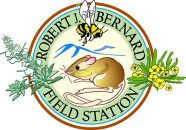Weisman, Carolyn (2021)
The Effect of Drought and Exotic Species on the Post-Fire Response of Artemisia californica.
Bachelor of Arts, Claremont McKenna College, Environmental Analysis.
Advisor: Diane Thomson.
Coastal Sage Scrub (CSS), a vegetation type found in Southern and Baja California, faces the risk of type conversion from native shrubs to exotic grasses and forbs as the Mediterranean climate warms and dries, and fires become more frequent. This study examined the impacts of the recent California drought (2012-2020) and exotic plants on post-fire recovery of the native CSS shrub Artemisia californica, as well as the importance of rainfall in the second year post-fire when most seedlings emerge. We created an individual-based demographic model using data from an experiment which monitored post-fire growth, survival, and seedling emergence of A. californica both with and without the removal of exotic species. The model started with the plants that survived the fire and projected forward 10 years for four different scenarios: (1) historic rainfall (2000-2011), no exotic removal, (2) drought (2012-2020), no exotic removal, (3) historic rainfall, exotic removal, and (4) drought, exotic removal. The results of the model indicated that rainfall, exotic removal, and their interaction all increased the median and variance of the final population size and when compounded, this effect is amplified. Additionally, rainfall in the second year post-fire significantly correlated final population size. Median plant size was similar among scenarios, although with higher variance in the populations with exotic removal. Consistent with previous research in older stands of A. californica that have not recently burned, the study our model was based on showed poor resprouting post-fire. The study highlights the importance of rainfall and exotic removal effects on A. californica seedling survival to prevent type-conversion to exotic grasses, particularly in the critical second year post-fire when most seedlings emerge.
After December 1, 2022, this thesis will be available at Scholarship@Claremont.
